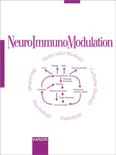
JOURNAL OF THE PERIPHERAL NERVOUS SYSTEM
Scope & Guideline
Championing Research that Transforms Peripheral Neurology
Introduction
Aims and Scopes
- Genetic and Molecular Mechanisms:
Research exploring the genetic underpinnings and molecular mechanisms of peripheral neuropathies, particularly focusing on inherited conditions like Charcot-Marie-Tooth disease and hereditary transthyretin amyloidosis. - Clinical Characterization and Diagnostics:
Studies aimed at improving the clinical diagnosis and characterization of peripheral neuropathies, including the use of advanced imaging techniques, nerve conduction studies, and biomarker identification. - Therapeutic Interventions and Clinical Trials:
Investigations into therapeutic strategies for managing peripheral neuropathies, encompassing pharmacological treatments, gene therapy, and clinical trial outcomes. - Pathophysiology of Neuropathies:
Research aimed at understanding the pathophysiological changes in peripheral nerve diseases, including inflammatory, autoimmune, and metabolic aspects. - Neuropathic Pain Management:
Studies focusing on the mechanisms and treatment of neuropathic pain associated with various peripheral nerve disorders. - Innovative Diagnostic Techniques:
Development and validation of novel diagnostic tools, such as ultrasonography and machine learning approaches, to enhance the assessment of peripheral nerve conditions.
Trending and Emerging
- Machine Learning and AI in Neuropathy Diagnosis:
There is a growing trend towards utilizing machine learning and artificial intelligence to improve diagnostic accuracy and patient outcomes in peripheral neuropathies. - Biomarker Discovery and Application:
Research focused on identifying and validating biomarkers for various neuropathies is on the rise, enhancing diagnostic capabilities and treatment monitoring. - Telemedicine and Remote Monitoring:
The use of telemedicine and digital health technologies for monitoring and managing peripheral neuropathies has gained traction, particularly in response to the COVID-19 pandemic. - Multi-Omics Approaches:
Emerging studies employing multi-omics techniques (genomics, proteomics, metabolomics) to better understand the complex biology of peripheral nerve disorders are increasingly prevalent. - Patient-Centered Outcomes and Quality of Life:
Research emphasizing the impact of peripheral neuropathies on quality of life and the development of patient-reported outcome measures is becoming more prominent.
Declining or Waning
- Chemical and Environmental Neuropathy:
Research focusing on chemical-induced neuropathies, such as those related to environmental toxins or specific chemotherapy agents, has become less frequent as a focus area. - Epidemiological Studies of Rare Neuropathies:
Epidemiological research on rare peripheral neuropathies is declining, possibly due to the increasing focus on more prevalent conditions and the need for robust data in clinical settings. - Basic Animal Model Studies:
There appears to be a reduction in studies solely based on basic animal models of peripheral neuropathies, as the focus shifts towards translational research that can directly inform clinical practice. - Socioeconomic Impact Studies:
The frequency of studies examining the socioeconomic impacts of peripheral neuropathies on patient populations has diminished, possibly overshadowed by more clinically relevant research. - Historical Perspectives on Neuropathy:
Articles providing historical context or retrospective analyses of neuropathies are appearing less frequently, reflecting a shift towards contemporary research and clinical applications.
Similar Journals

Pain Practice
Exploring New Frontiers in Pain MedicinePain Practice is an esteemed journal published by WILEY, focusing on the vital field of Anesthesiology and Pain Medicine. With an impressive impact factor reflected in its ranking of #30 out of 136 in its category, Pain Practice operates within the Q2 quartile, indicating its significant influence and contribution to research and clinical practices in managing pain. Established in 2004 and set to converge in 2024, this journal is dedicated to publishing high-quality, peer-reviewed articles that cover a wide range of topics related to pain management, therapeutic approaches, and novel interventions. Although it does not currently offer open access, it remains a crucial resource for professionals and researchers in the field, encouraging advancements in treatment methods and enhancing patient care in pain management.

NEUROIMMUNOMODULATION
Fostering Collaboration in Neuroimmunological ResearchNEUROIMMUNOMODULATION is a well-respected journal published by KARGER that focuses on the intricate interactions of the nervous and immune systems. With its ISSN 1021-7401 and E-ISSN 1423-0216, it serves as a vital resource for researchers and professionals interested in neuroimmunology and related fields. The journal has been committed to disseminating high-quality research from its inception in 1994 and continues to thrive, with its scope converged until 2024. Notably, it holds a Q3 ranking in 2023 across diverse categories such as Endocrine and Autonomic Systems, Endocrinology, Immunology, and Neurology, reflecting its significance in the scientific community. Although the journal is not open access, it remains an essential publication for advancing knowledge and fostering collaboration among scholars, making it a noteworthy source of cutting-edge findings in the complex interplay between neural and immune processes.

Pain Reports
Advancing pain management through open access research.Pain Reports, published by LIPPINCOTT WILLIAMS & WILKINS, is a premier open access journal dedicated to advancing the field of anesthesiology and pain medicine. With an impressive impact factor and a ranking of #15 out of 136 in its category, this journal is recognized within the 89th percentile of its field as of 2023. Since its launch in 2016, Pain Reports has provided a vital platform for researchers, clinicians, and professionals to disseminate and access high-quality research articles, reviews, and case studies focused on the multifaceted aspects of pain management and treatment. Through its commitment to open access, the journal ensures that cutting-edge findings are readily available to a global audience, facilitating collaboration and knowledge sharing. With its scope continually evolving until 2024, Pain Reports strives to address the critical and emerging challenges in pain research, making it an essential resource for individuals dedicated to improving patient outcomes and advancing scholarly discourse in pain management.

NEUROMODULATION
Cutting-edge Research for Enhanced Patient CareNEUROMODULATION is a premier academic journal dedicated to advancing the fields of anesthesiology, pain medicine, and neurology. Published by Elsevier, this prestigious journal has consistently maintained a high impact factor, reflecting its relevance and influence in the medical community. With a commendable track record spanning from 1998 to 2024, NEUROMODULATION is classified in the Q1 quartile for both Anesthesiology and Pain Medicine and Medicine (miscellaneous), demonstrating its excellence among top-tier journals. Additionally, it ranks in the Q2 quartile for Neurology and Clinical Neurology, showcasing a broad appeal across multiple disciplines. The journal's substantial Scopus rankings—22nd out of 136 in Anesthesiology and Pain Medicine and 93rd out of 400 in Clinical Neurology—underscore its critical role in disseminating cutting-edge research and clinical findings. NEUROMODULATION endeavors to provide a robust platform for researchers, clinicians, and students to explore innovative therapeutic approaches and the complexities of neural modulation, ultimately contributing to improved patient outcomes and advancing the state of medical science.

RESTORATIVE NEUROLOGY AND NEUROSCIENCE
Nurturing Knowledge: Bridging Research and Clinical Practice in NeuroscienceRESTORATIVE NEUROLOGY AND NEUROSCIENCE, published by IOS PRESS, is a premier journal dedicated to advancing the fields of neurology and neuroscience. Since its inception in 1989, this journal has played a crucial role in disseminating cutting-edge research findings and innovative therapeutic approaches that aim to restore neurological function and improve patient outcomes. With a focus on developmental neuroscience and clinical neurology, the journal holds a 2023 Scopus ranking of #129 out of 400 in clinical neurology, and #15 out of 37 in developmental neuroscience, reflecting its significant influence in these domains. Although it operates on a non-open access model, RESTORATIVE NEUROLOGY AND NEUROSCIENCE offers valuable insights for researchers, healthcare professionals, and students seeking to deepen their understanding of neural restoration mechanisms and therapeutic strategies. Located in Amsterdam, Netherlands, the journal continues to foster scholarly dialogue and innovation, contributing to the global advancement of neuroscience and neurology.

GLIA
Exploring the Intricacies of Glial CellsGLIA is a premier journal in the fields of Cellular and Molecular Neuroscience and Neurology, published by WILEY. With an impressive track record since its inception in 1988, GLIA has become an essential resource for researchers and professionals interested in the complexities of glial cells and their roles in the nervous system. Featuring articles that encompass a wide range of topics, from basic research to clinical implications, the journal is committed to advancing our understanding of neurological functions and disorders. Although not an open access publication, GLIA maintains its reputation with a significant impact factor, consistently ranking in the Q1 category as noted in 2023 Scopus rankings. With its comprehensive scope and high-quality peer-reviewed content, GLIA serves as a vital platform for disseminating groundbreaking research in the ever-evolving landscape of neuroscience.

Current Vascular Pharmacology
Unveiling Breakthroughs in Vascular TherapeuticsCurrent Vascular Pharmacology is a premier academic journal published by Bentham Science Publications Ltd, focusing on the intersection of pharmacology and cardiovascular medicine. With an impact factor that reflects its significance in the field, this journal ranks in the Q1 category for both Pharmacology and Cardiology, showcasing its dedication to high-quality research. Its Scopus ranks place it in the top percentile of its categories, highlighting its influence among scholars and practitioners alike. Issued since 2003 and continuing through 2024, Current Vascular Pharmacology aims to disseminate cutting-edge findings and foster knowledge exchange among researchers, professionals, and students engaged in cardiovascular pharmacology. Despite being a subscription-based journal, it remains a vital resource for those seeking the latest advancements in drug development and therapeutic interventions for vascular diseases. Located in the United Arab Emirates, the journal serves as an essential platform for global discourse on vascular health.

Pain Research & Management
Fostering Collaboration in Pain Research and ManagementPain Research & Management, published by HINDAWI LTD, is a leading academic journal that serves as a vital resource for researchers, clinicians, and students in the fields of anesthesiology, pain medicine, and neurology. With an impressive impact factor and categorized in the second quartile (Q2) for both anesthesiology and neurology as of 2023, the journal features high-quality, peer-reviewed research articles that address the complexities of pain management. Established in 1996 and recognized as Open Access, this journal allows unrestricted access to groundbreaking studies, thereby facilitating knowledge dissemination and collaboration within the global scientific community. With a strong ranking—34/136 in anesthesiology and 72/192 in neurology—Pain Research & Management retains a well-deserved reputation for publishing innovative and authoritative content that significantly contributes to the advancement of pain research and clinical practice. Researchers and healthcare professionals alike will find this journal indispensable for staying abreast of the latest discoveries and best practices in pain management.

AUTONOMIC NEUROSCIENCE-BASIC & CLINICAL
Fostering Collaboration in Neurobiology ResearchAUTONOMIC NEUROSCIENCE-BASIC & CLINICAL, published by Elsevier, stands as a pivotal journal in the fields of Cellular and Molecular Neuroscience, Endocrine and Autonomic Systems, and Neurology (Clinical), boasting an impressive Q2 ranking in the latter two categories as of 2023. This journal, which has been in circulation since 2000, provides a vital platform for disseminating innovative research pertaining to the autonomic nervous system's fundamental and clinical aspects, thus addressing significant challenges in both theoretical understanding and clinical application. Researchers and practitioners worldwide find value in its comprehensive articles, reviews, and case studies that explore the intricacies of autonomic neurobiology. As part of Elsevier's prestigious portfolio, the journal offers options for Open Access, enhancing the visibility and accessibility of its content. With an increasing impact on clinical practices and research directions, AUTONOMIC NEUROSCIENCE-BASIC & CLINICAL serves as an essential resource for advancing knowledge and fostering collaboration among scholars, clinicians, and students dedicated to unraveling the complexities of the autonomic nervous system.

NEUROSCIENCE LETTERS
Connecting Knowledge with Neurological Innovation.NEUROSCIENCE LETTERS is a distinguished journal published by ELSEVIER IRELAND LTD, focusing on disseminating impactful research across the field of neuroscience. With its ISSN 0304-3940 and E-ISSN 1872-7972, the journal serves as a vital platform for researchers, professionals, and students aiming to explore the complexities of nervous system function and related disorders. Since its inception in 1975, NEUROSCIENCE LETTERS has contributed significantly to the field, currently positioned in the Q3 category for Miscellaneous Neuroscience, with a respectable Scopus rank of 52/113, placing it in the 54th percentile among its peers. The journal is published in Ireland and offers a comprehensive repository of scientific insights, methodologies, and innovative findings that advance our understanding of neurological phenomena. While not an open-access journal, it remains an essential resource for the latest advances in neuroscience research and the academic community’s collective knowledge.